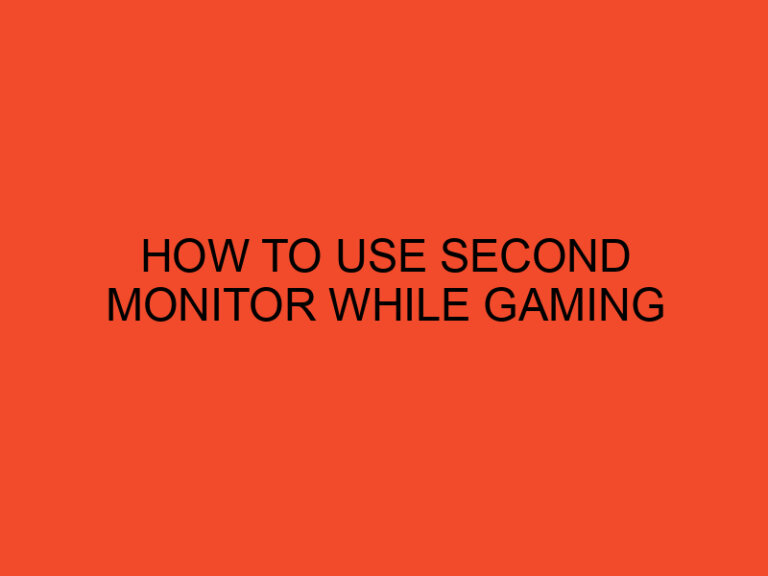In today’s digital age, gaming has become a popular form of entertainment for many people. Whether you’re a casual gamer or a dedicated enthusiast, having a high-performance gaming laptop can greatly enhance your gaming experience. Building your own gaming laptop allows you to customize its specifications according to your needs and preferences. In this article, we will guide you through the process of building a gaming laptop step by step.
Table of Contents
- How to Build a Gaming Laptop?
- Understanding Your Gaming Needs
- Choosing the Right Components
- Selecting the Processor
- Deciding on the Graphics Card
- Determining the Memory and Storage
- Picking the Display
- Selecting the Keyboard and Mouse
- Choosing the Cooling System
- Assembling the Laptop
- Installing the Operating System
- Optimizing Performance
- Maintaining Your Gaming Laptop
- Troubleshooting Tips
- Conclusion
- FAQs
How to Build a Gaming Laptop?
Building a gaming laptop allows you to have full control over its specifications and performance. By carefully selecting each component, you can ensure that your laptop can handle the latest games and deliver smooth gameplay.
Understanding Your Gaming Needs
Before you start building your gaming laptop, it’s essential to understand your gaming needs. Consider the types of games you play, their system requirements, and your budget. This information will help you make informed decisions when choosing the components.
Choosing the Right Components
To build a gaming laptop, you need to select several key components. These include the processor, graphics card, memory, storage, display, keyboard, mouse, and cooling system. Each component plays a crucial role in the overall performance of your laptop.
Selecting the Processor
The processor is the brain of your gaming laptop. It determines how fast your laptop can process data and execute commands. Look for a processor that offers high clock speeds and multiple cores, as these are essential for gaming performance.
Deciding on the Graphics Card
The graphics card is responsible for rendering the visuals in your games. It’s crucial to choose a powerful graphics card that can handle the demands of modern games. Look for a card with sufficient VRAM and a high core clock speed.
Determining the Memory and Storage
Having an ample amount of memory (RAM) is important for smooth gaming performance. Aim for at least 8GB or 16GB of RAM, depending on your budget. In terms of storage, consider a combination of a solid-state drive (SSD) for faster load times and a larger hard disk drive (HDD) for storing games and files.
Picking the Display
The display is where you’ll be viewing and enjoying your games. Look for a high-resolution display with a fast refresh rate for a more immersive gaming experience. Consider factors like screen size, panel type, and color accuracy when choosing a display.
Selecting the Keyboard and Mouse
As a gamer, you’ll spend a significant amount of time using the keyboard and mouse. Choose a mechanical keyboard for better tactile feedback and precision. For the mouse, look for a model that offers high sensitivity and customizable buttons.
Choosing the Cooling System
Gaming laptops tend to generate a lot of heat, so proper cooling is crucial to prevent overheating. Opt for a laptop with efficient cooling mechanisms such as heat pipes, fans, and vents. Additionally, consider using a cooling pad for extra ventilation.
Assembling the Laptop
Once you have gathered all the necessary components, it’s time to assemble your gaming laptop. Follow the manufacturer’s instructions and take necessary precautions to ensure a safe and successful assembly process. Be careful with delicate components and make sure all connections are secure.
Installing the Operating System
After assembling the laptop, you need to install an operating system. Windows is a popular choice for gaming laptops due to its extensive compatibility with games. Follow the installation process and make sure to install the latest drivers for your components.
Optimizing Performance
To get the best performance out of your gaming laptop, there are several optimization steps you can take. These include updating drivers, tweaking graphics settings, managing background processes, and installing game optimization software.
Maintaining Your Gaming Laptop
Regular maintenance is essential to keep your gaming laptop in top condition. Clean the laptop regularly, remove dust from the cooling system, and keep the software up to date. Taking care of your laptop will prolong its lifespan and ensure optimal performance.
Troubleshooting Tips
In case you encounter any issues with your gaming laptop, here are some troubleshooting tips to help you resolve common problems. These include checking for driver updates, running system diagnostics, and seeking professional assistance if needed.
Conclusion
Building a gaming laptop offers the flexibility to create a customized gaming experience. By carefully selecting each component and following the assembly process, you can have a powerful gaming machine that meets your specific needs and preferences.
FAQs
Is building a gaming laptop more cost-effective than buying a pre-built one?
Building a gaming laptop can be cost-effective if you carefully choose the components based on your budget and needs. It allows you to prioritize the components that matter the most to you, potentially saving money compared to buying a pre-built laptop with unnecessary features.
How long does it take to build a gaming laptop?
The time it takes to build a gaming laptop can vary depending on your experience and the complexity of the components. It can take anywhere from a few hours to a full day to assemble and set up the laptop.
Can I upgrade my gaming laptop in the future?
Yes, one of the advantages of building your own gaming laptop is the ability to upgrade components in the future. As technology advances and your needs change, you can swap out certain components such as the graphics card, memory, or storage for more powerful ones.
What tools do I need to build a gaming laptop?
To build a gaming laptop, you will need basic tools such as screwdrivers, thermal paste, and an anti-static wristband to prevent damage from static electricity. Additionally, it’s helpful to have a clean and well-lit workspace.
Are there any risks involved in building a gaming laptop?
Building a gaming laptop carries some risks, such as damaging components during the assembly process or voiding warranties if not done properly. It’s important to follow the instructions carefully and take necessary precautions to minimize the risks.





